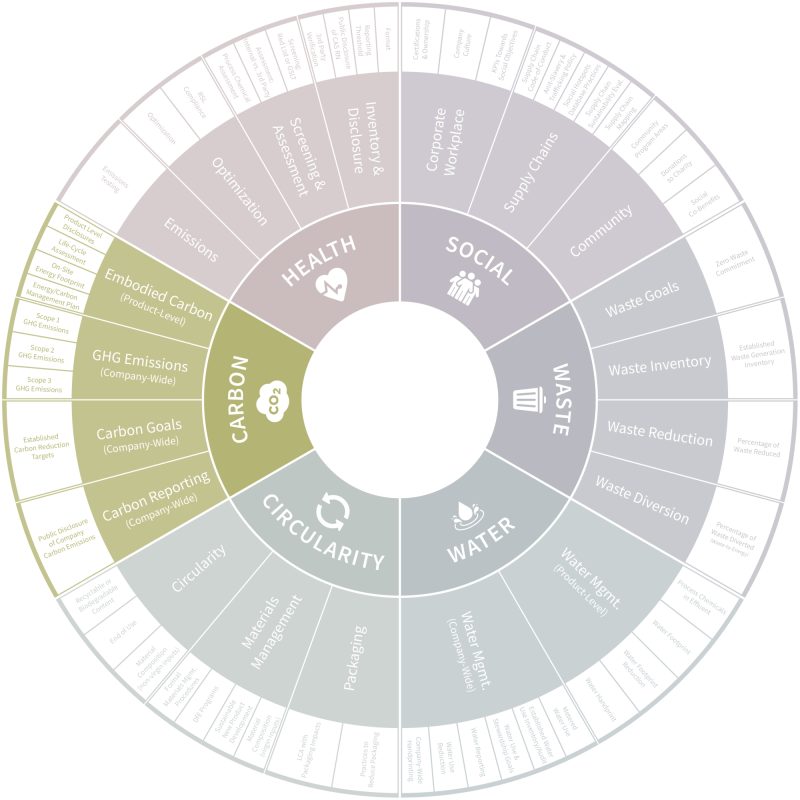CARBON
In 2018 the World Health Organization announced that climate change is now the single biggest threat to global health, and the energy-intensive building industry is a major contributor making up roughly 40% of global greenhouse gas (GHG) emissions.
To meet our goals of reducing global warming to 1.5° C by 2030, carbon emissions need to be cut by 65% over the next decade. This means reducing both the energy that buildings use in their operation, aka operational carbon, as well as the emissions associated with the materials that make up buildings, aka embodied carbon.
It is this embodied carbon and the materials we use over the next decade that have upfront immediate effects and will set the trajectory for whether we reach the 2030 climate goals, which is why it is critically urgent that architects and the building industry address embodied carbon now.
DESIGN STRATEGIES













KEY PRODUCT CONSIDERATIONS

Embodied Carbon (product-level)
Has the product disclosed its embodied carbon through life cycle assessments or EPDs?
Does it have reduced carbon emissions compared with other options?
Greenhouse Gas (GHG) Emissions (company-wide)
Has the manufacturer determined their total greenhouse gas emissions across the company, setting a baseline for improvement?
Carbon Goals
Does the company have established carbon reduction goals and defined targets for reducing emissions?
Reduced Emissions
Has the company reduced their GHG emissions since an established baseline year?
PRODUCT HIGHLIGHTS






WORDS OF INSPIRATION
Watch bio-fab designer Charlotte McCurdy talk about carbon in relation to her work at the 2019 Design Frontiers Symposium hosted by the Healthy Materials Lab.
“Design itself is an incredibly powerful tool- to remake and shape the world that we want to see.”
Join Our Academic Network
Get Access to our carefully researched and curated academic resources, including model syllabi and webinars. An email from an academic institution or a .edu email address is required. If your academic institution does not use .edu email addresses but you would like to join the network, please contact healthymaterialslab@newschool.edu.
Already have an account? Log in